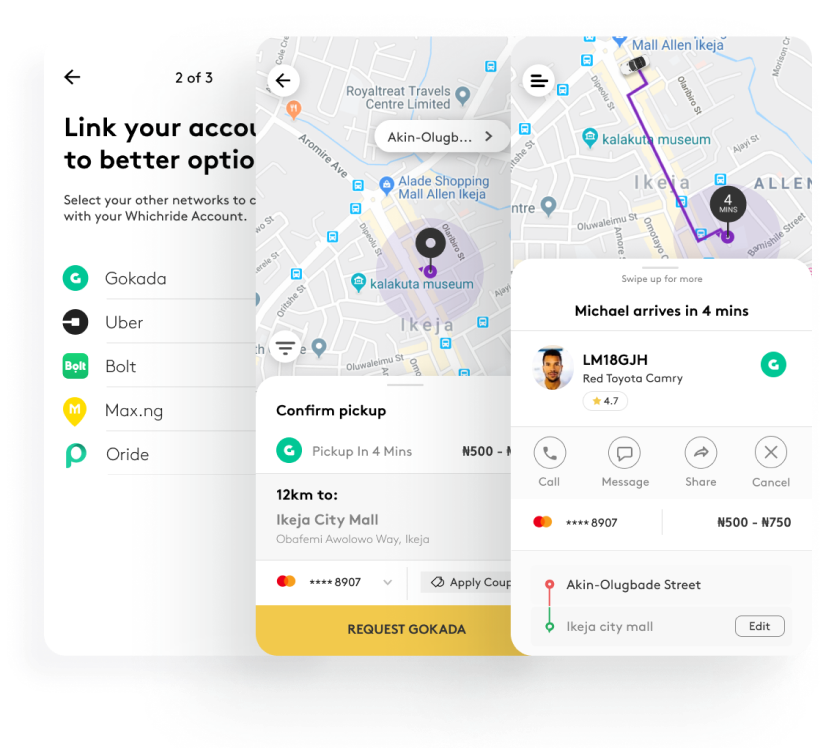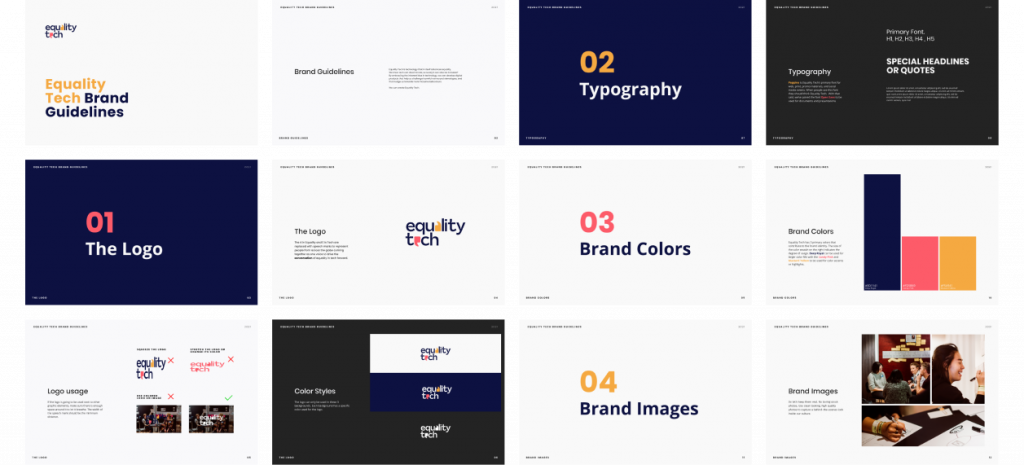Brand Development
The availability and access to technology has given product users an abundance of options. As a result of this abundance, users are now more interested in prioritising their user experience. In a bid to evolve with their users, companies have now come to value the personalisation of their identity. Asking themselves questions like; “How do we stay ahead of our competition?, “How do we personalise our experience?, “How do we create our own unique touch?”. As humans have unique personalised identities, brands, in the same vein, create identities to reflect their diverse missions, visions and objectives.
What is brand identity?
Brand identity is a set of visual components that represent ideas, allows users to connect with companies, distinguish them from existing competitors, build users’ loyalty, and create a lasting perception. In simple terms, brand describes a business, company, or product, while identity describes the set of qualities that differentiates a brand from others.
What do you need to create a powerful brand identity?
- A distinct brand purpose: A unique purpose doesn’t only differentiate a brand from competitors, but also creates a mutual relationship between the brand and its product users. In creating a purpose, precisely write out a brand’s offerings, long-term goals and promise to users.
- Extensive Audience and competitors’ research: Understanding the interests, motivations, frustrations of users and the factors that drive them to make decisions is essential. Not only that, learning from competitors by highlighting gaps in the market and capitalising on new opportunities is an added advantage.
- A trustworthy tone of voice: A brand’s tone of voice determines whether users will identify with a brand or not. This means, brands need to establish trust by creating a unique and relatable tone of voice that reflects their value and ideas.
- A unique selling proposition (USP): This is about creating a selling point that differentiates your product from competitors. A USP requires developing a user persona, finding out a problem that has been left unsolved by competitors, and developing a solution based on the findings.
- Link brand identity elements: Visual elements such as typography, colours, and logos are all telling a story, the brand identities need to all be linked. The brand identities need to reflect and align with the brand’s goals and mission.
- Implement brand identity positioning strategies: The importance of brand strategy cannot be overstated. By applying practical methods such as leveraging your social media presence, building products, and collaborating with relevant agencies, a brand can successfully position itself in the target market.
What are the elements of brand identity? Why should you care?
Establishing a brand identity requires creating a set of visual elements representing a brand’s mission and unique selling proposition. Here are some powerful tools to shape a user’s perception of a brand:
- Logos A logo is the first thing a user interacts with. A unique logo sets a brand apart from competitors, and conveys brand essence. This element incorporates brand message into fonts and designs as a means of increasing consistency and brand trust.

2. Typography: Also known as “Fonts.” This element is significant in linking all kinds of brand communication, from website copy to email content and published articles. Typography communicates the brand’s tone, indicating if they are serious, playful, or informal.There are four significant types of typography, as shown in the image below.
3. Colour palette: Color selection and usage has a strategic impact on a brand; creates a psychological connection with users, instantly triggers memories and brand associations. E.g “McDonald’s golden arches” and “Coca-Cola’s red”.
Below are some basic colour directives and what they mean for brand identity, this is a mere guide and not a strict rule.explains different colours, meanings and relevance to a brand’s identity.
4. Taglines: Crafting a memorable and catchy tag strengthens a brand’s positioning, making it easy for users to identify with it.
A good tagline is an addition that is practically part of the brand name, like a phantom limb. For example; L’oreal, “Because you’re worth it”, Nike’s “Just do it”, and BMW’s “Sheer driving pleasure”.
Forms and importance of brand identity
- Logo design: A logo’s usefulness includes revealing a brand identity, inviting prospective users, fostering brand loyalty, and creating awareness. The image below reveals the different logo designs we created for Equality Tech.
2. Website design: A website influences a brand’s reputation and increases credibility. As a result, it is important to ensure that a brand’s website displays information that represents the brand ideas and offerings. Creating a one-of-a-kind website design improves a user’s interaction and experience with a brand.
3. Product design: Crafting a product’s look and usefulness shapes a brand’s relevance in the target market. Brands can connect with users and provide solutions to their needs through product design.

4. Email design: Engaging users through mailing channels is one of the greatest marketing practices. Creating an interactive email design keeps readers engaged with the company. When designing email templates, it is necessary to consider the purpose of the email and its readability.
5. Brand guidelines, Brochures and Business cards: These assets provide distinct advantages. With the usage of brochures, users can be consistently kept abreast of updates. While business cards can be explored to provide information such as brand names, titles, email addresses, and website domains.

What are the best ways to position a brand using brand identity?
- Storytelling : The story of a brand is an emotive, enticing, and relevant narrative that connects a brand with its users. A narrative reflects the essence of a brand and can be conveyed either from the perspective of users or the brand.
2. Awareness: Individuals have an innate ability to associate logos, colours and advertisements seen on either digital or traditional platforms. Hence the need for a brand to create awareness through advertising, partnerships, and sponsorships.
3. Focus on user: A user-focused brand is always a step ahead of the competition. Engaging with your users means your brand is aware of what you need to make your product/service better. Giving your brand a competitive advantage.
4. Keep an open mind: Learning is continuous, a brand that is always drawing inspiration from its surroundings and implementing the pertinent ones is always going to be at the giant of industry. With this in mind, it is also important to keep a keen eye at competitors, and seek to seize relevant opportunities to keep the growth consistent.
No doubt, a brand identity differentiates a brand from competitors and positions its offering, value and promise to users in the target market.
To find out more about brand identity and brand designs, email daniel@studio14online.co.uk.